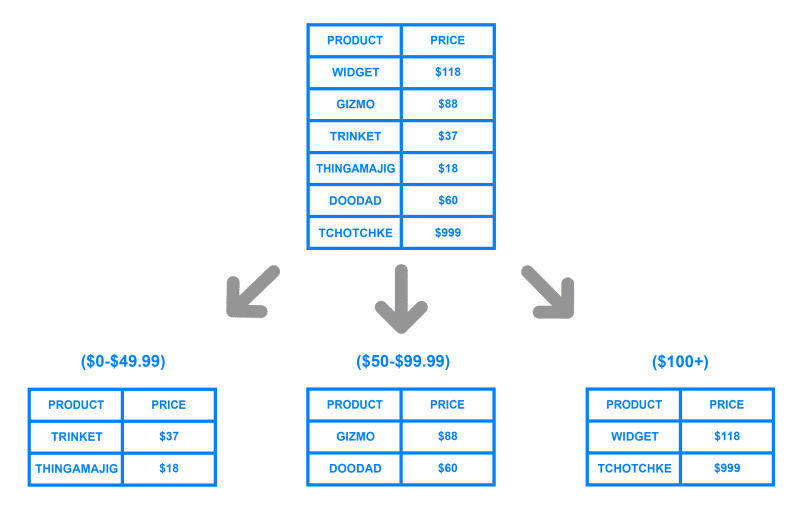Partitioning is a powerful feature in PostgreSQL that enables efficient data organization, improves query performance, and simplifies data management. It allows you to divide large tables into smaller, more manageable chunks called partitions, based on specific criteria. In this article, we'll explore the benefits of partitioning and its various use cases, along with code samples and expected output.
Benefits of Partitioning
1. Enhanced Query Performance
Partitioning offers significant performance improvements, especially when dealing with large datasets. By dividing a table into smaller partitions, queries can target specific partitions based on the search criteria. This eliminates the need to scan the entire table, resulting in faster query execution times.
2. Improved Data Management
Partitioning simplifies data management by allowing you to focus on specific subsets of data within a table. It becomes easier to add, remove, or archive data based on the partitioning scheme, reducing administrative overhead and optimizing storage usage.
3. Increased Concurrency
Partitioning enhances concurrency by enabling parallel query execution on individual partitions. Multiple queries can operate on different partitions concurrently, improving overall system performance and response times.
4. Efficient Data Archiving and Deletion
Partitioning facilitates data archiving and deletion. You can easily drop or detach old partitions, providing an efficient way to manage historical or infrequently accessed data. This helps to maintain a lean and performant database system.
5. Simplified Maintenance Operations
Partitioning simplifies maintenance operations, such as backups and index rebuilds. You can perform these operations on individual partitions instead of the entire table, reducing downtime and improving overall database availability.
Use Cases for Partitioning
1. Time-Based Data
One common use case for partitioning is organizing time-based data, such as event logs, sensor readings, or financial transactions. Partitioning by date or timestamp allows for efficient data retrieval and analysis, especially when querying specific time ranges.
Let's consider an example where we partition a table based on the creation timestamp. Here's a sample schema and the expected output:
-- Create the partitioned table
CREATE TABLE sales (
id SERIAL,
product_name VARCHAR(100),
sale_date DATE
) PARTITION BY RANGE (sale_date);
-- Create partitions
CREATE TABLE sales_2019 PARTITION OF sales FOR VALUES FROM ('2019-01-01') TO ('2020-01-01');
CREATE TABLE sales_2020 PARTITION OF sales FOR VALUES FROM ('2020-01-01') TO ('2021-01-01');
CREATE TABLE sales_2021 PARTITION OF sales FOR VALUES FROM ('2021-01-01') TO ('2022-01-01');
-- Insert sample data
INSERT INTO sales (product_name, sale_date) VALUES ('Product A', '2020-03-15');
INSERT INTO sales (product_name, sale_date) VALUES ('Product B', '2021-05-20');
-- Query data from specific partition
SELECT * FROM sales_2020;
Expected Output:
| id | product_name | sale_date |
|---|---|---|
| 1 | Product A | 2020-03-15 |
In this example, we create a partitioned table "sales" based on the "sale_date" column. We then create three partitions for the years 2019, 2020, and 2021. When querying, we can target a specific partition, such as "sales_2020", to retrieve data only from that year, resulting in faster queries.
2. Geographical Data
Partitioning can also be beneficial for managing geographical data, such as location
-based information or spatial data. By partitioning tables based on regions, you can efficiently query data related to specific areas, reducing the search space and improving query performance.
Consider a scenario where we partition a table based on the country column. Here's an example schema and expected output:
-- Create the partitioned table
CREATE TABLE customers (
id SERIAL,
name VARCHAR(100),
country VARCHAR(100)
) PARTITION BY LIST (country);
-- Create partitions
CREATE TABLE customers_usa PARTITION OF customers FOR VALUES IN ('USA');
CREATE TABLE customers_uk PARTITION OF customers FOR VALUES IN ('UK');
CREATE TABLE customers_canada PARTITION OF customers FOR VALUES IN ('Canada');
-- Insert sample data
INSERT INTO customers (name, country) VALUES ('John Doe', 'USA');
INSERT INTO customers (name, country) VALUES ('Jane Smith', 'UK');
-- Query data from specific partition
SELECT * FROM customers_usa;
Expected Output:
| id | name | country |
|---|---|---|
| 1 | John Doe | USA |
In this example, we create a partitioned table "customers" based on the "country" column. We then create three partitions for customers from the USA, UK, and Canada. By querying specific partitions like "customers_usa", we can efficiently retrieve data related to customers from the USA.
Conclusion
Partitioning is a powerful feature in PostgreSQL that offers numerous benefits for optimizing query performance and simplifying data management. By leveraging partitioning, you can improve overall system performance, enhance data retrieval efficiency, and simplify maintenance operations. With the use cases discussed in this article and the provided code samples, you can start exploring partitioning in PostgreSQL and harness its advantages for your database systems.
Remember, effective partitioning requires careful planning and consideration of your specific data patterns and access patterns. Experiment with different partitioning strategies and monitor the performance to fine-tune your implementation.
Extra readings and resources:
PGSQL 10 partitioning
Create table partition
How to create a partitioned table in Postgres
PostgreSQL Partitioning Tutorial



Top comments (0)